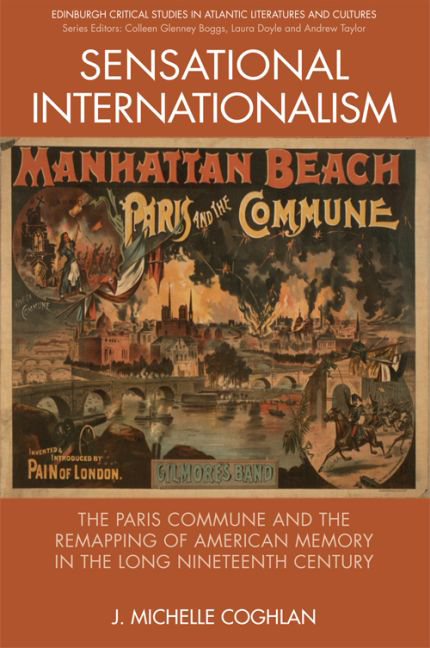 Sensational Internationalism
Sensational Internationalism Book contents
- Frontmatter
- Contents
- List of Illustrations
- Acknowledgments
- Series Editors’ Preface
- Introduction: Revolutionary Preoccupations: Or, Transatlantic Feeling in a Radical Sense
- 1 Framing the Pétroleuse: Postbellum Poetry and the Visual Culture of Gender Panic
- 2 Becoming Americans in Paris: The Commune as Frontier in Turn-of-the-Century Adventure Fiction
- 3 Radical Calendars: The Commune Rising in Postbellum Internationalism
- 4 Tasting Space: Sights of the Commune in Henry James's Paris
- 5 Restaging Horror: Insurgent Memories of the Commune in the 1930s
- Epilogue: Barricades Revisited – The Commune on Campus from FSM to SDS
- Notes
- Bibliography
- Index
Epilogue: Barricades Revisited – The Commune on Campus from FSM to SDS
- Frontmatter
- Contents
- List of Illustrations
- Acknowledgments
- Series Editors’ Preface
- Introduction: Revolutionary Preoccupations: Or, Transatlantic Feeling in a Radical Sense
- 1 Framing the Pétroleuse: Postbellum Poetry and the Visual Culture of Gender Panic
- 2 Becoming Americans in Paris: The Commune as Frontier in Turn-of-the-Century Adventure Fiction
- 3 Radical Calendars: The Commune Rising in Postbellum Internationalism
- 4 Tasting Space: Sights of the Commune in Henry James's Paris
- 5 Restaging Horror: Insurgent Memories of the Commune in the 1930s
- Epilogue: Barricades Revisited – The Commune on Campus from FSM to SDS
- Notes
- Bibliography
- Index
Summary
It's hard to see what's possible. It's hard to see the future. It's easy to look in hindsight. I think our problem is that when we look in hindsight, we tend to focus on the failures and losses and the intransigence of power. If our expectation is that you can challenge power and create space for new possibilities, then we have millions of examples of that.
Robin D. G. KelleyIn January 1965, embattled University of California President Clark Kerr gave an interview with the Los Angeles Times about what he termed the “uprising” on Berkeley's campus, an uprising that would come to be known as the Free Speech Movement (FSM). A month previously, over 800 Cal students had been arrested at a sit-in on Sproul Plaza, protesting the banning of political agitation on campus; three days later, the young face of the movement – Mario Savio – had been dragged from the platform of the Greek Theater, where 15,000 students had assembled to hear him, by police there to arrest him. Kerr warned the paper and, by extension, the American public that “a new student generation, very much different than those that preceded it, is now with us.” But if he claimed these young activists represented a threat unlike any seen previously, he also cordoned them off from the rest of the country – and, by extension, other university campuses – by suggesting that they were uniquely the product of a bit of Berkeley that was itself cut off from the rest of the nation: “If anything in the United States could be said to resemble the Paris of the left bank, it is the area around Telegraph avenue just off campus.” These new radicals were, in Kerr's estimation, forged by a “disorganized, ‘left-bank’ crowd” that had sprung up alongside the cafés and bookstores that lined a single street bordering the campus, a street that Kerr notably did not read as a spillover of the intellectual and political life of the university and could not make sense of as American.
- Type
- Chapter
- Information
- Sensational InternationalismThe Paris Commune and the Remapping of American Memory in the Long Nineteenth Century, pp. 153 - 159Publisher: Edinburgh University PressPrint publication year: 2016


